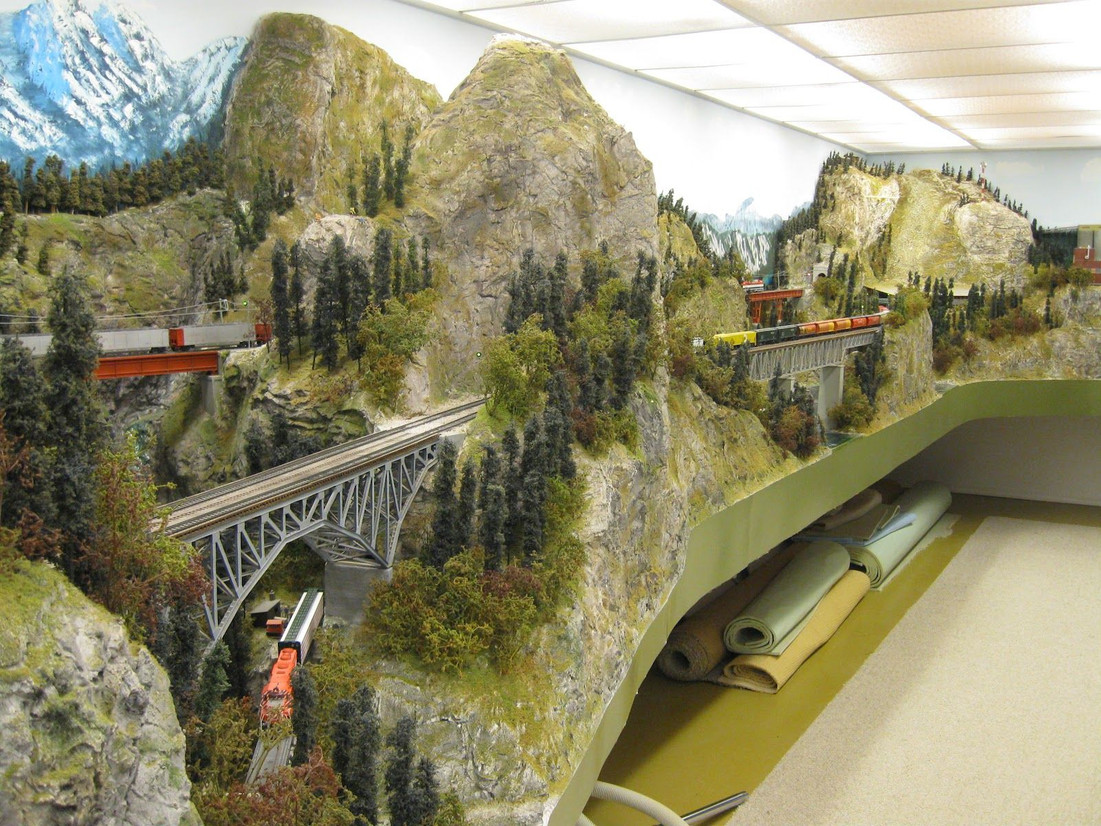Part 3: Techniques for Realistic Scenery Construction
In the realm of model building and diorama creation, achieving realism in scenery is an art that requires a combination of skill, creativity, and an understanding of natural elements. In this part of our series, we will delve into specific techniques for constructing realistic scenery that captivates viewers and transports them to miniature worlds.
3.1. Building Realistic Terrain and Landscapes
The foundation of any realistic diorama or model layout is the terrain. Mimicking the natural undulations of the earth's surface adds depth and interest to your scene. Here are some techniques to consider:
- Layering Materials: Utilize a variety of materials to build up your terrain, such as foam board, plaster cloth, and sculpting moldable materials. Layering these materials allows for the creation of hills, valleys, and other natural features.
- Texture and Detail: Add texture to your terrain by applying ground coverings like static grass, sand, or even real dirt. This helps simulate the varied textures found in nature. Incorporate small details like pebbles, twigs, and leaves to enhance realism.
- Painting Techniques: Use a combination of dry brushing and washes to bring out the details of your terrain. Earthy tones, greens, and browns can be applied in layers to create a realistic, natural look. Experiment with different shades to mimic the diversity of vegetation.
3.2. Vegetation and Trees: A Guide to Lifelike Foliage
Vegetation is a crucial aspect of any natural scene, and creating realistic foliage adds authenticity to your model. Consider the following techniques:
- Static Grass and Flocking: Use static grass applicators to apply fine fibers that stand upright, resembling real grass. Flocking materials can also be used to simulate various ground covers like moss and underbrush.
- Foam and Lichen Trees: Create custom trees using foam as a base structure. Apply foliage using lichen, which can be dyed to represent different types of trees. This method allows for realistic branching and foliage patterns.
- Wire Armature Trees: For more control over tree shape, construct a wire armature and cover it with model foliage or even natural materials like preserved leaves. This method is particularly effective for deciduous trees with intricate branching.
3.3. Rock Formations, Cliffs, and Mountains
Rocks and mountains provide a dramatic backdrop to your scenery. Achieving realistic rock formations involves careful attention to detail and texture. Here's how:
- Carving and Sculpting: Carve rocks from foam or sculpt them using plaster or clay. Pay attention to the natural shapes and layers found in real rock formations. Texture can be added using tools or textured paints.
- Dry Brushing: Enhance the texture of your rocks by dry brushing with various shades of gray, brown, and tan. This technique helps bring out the details and gives the rocks a weathered, natural appearance.
- Layering and Stacking: Build up your rock formations by layering different materials or stacking carved pieces. This method adds depth and complexity to your scenery.
3.4. Water Features and Creating Realistic Bodies of Water
Water features, whether they be rivers, lakes, or ponds, are a dynamic element that can greatly enhance the realism of your model. Consider the following techniques:
- Resin Pours: Use clear epoxy resin to create realistic water. This method allows for the modeling of ripples, waves, and reflections. Tint the resin with appropriate colors for added realism.
- Foam Carving: Carve foam to create the banks of a river or the shore of a lake. Apply realistic textures and then cover the surface with clear resin to simulate water.
- Water Effects Products: Explore specialized water effects products that can be poured or brushed onto your model to create the illusion of water. These products often dry clear and can be sculpted to achieve desired effects.
Incorporating these techniques into your model building endeavors will elevate your scenery construction to new heights of realism. Remember to observe the natural world for inspiration and continuously experiment with different materials and methods to refine your skills. In the next part of our series, we will explore additional details and finishing touches that will bring your miniature world to life.
Visit MidewestModelRR.com for all your scenery needs!
Photo is of Arnold Walker’s Northland Route in Winnipeg
Recent Posts
-
Prototype Spotlight: GE ES44AC — Modeling a Modern Freight Workhorse
Prototype Spotlight: GE ES44AC — Modeling a Modern Freight Workhorse Published 2025-09-29• 8–10 min
-
How to Build a Realistic Freight Yard: Flow, Trackwork, and Car Management
How to Build a Realistic Freight Yard: Flow, Trackwork, and Car Management Published 2025-09-25 • 8
-
Scenery Basics: From Foam to Foliage — A Quick, Budget-Friendly Guide | Midwest Model Railroad
Modeling Tutorial Scenery Basics: From Foam to Foliage Published 2025-09-23 · 7–9 minute read Li




